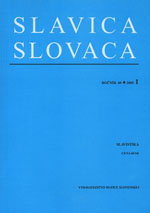
We kindly inform you that, as long as the subject affiliation of our 300.000+ articles is in progress, you might get unsufficient or no results on your third level or second level search. In this case, please broaden your search criteria.

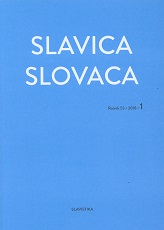
The author of John appears not to have been completely immune from confusing prepositions, a linguistic fact demonstrated in this essay. The argument developed here points up several instances in which the preposition εἰς replaces other prepositions. In several texts, for instance in chapter 20, such confusion has no bearing on the translation, but at least in the case of John 4:5 the phenomenon of the rivality of prepositions must be heeded and the translation adjusted in the light of this discovery.
More...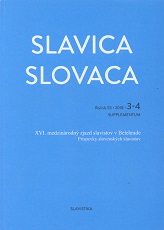
Over the past more than two decades one can observe abrupt changes in the development tendencies of all Slavic languages. These changes are manifested mainly in the language internationalization, in the wiping differences between language styles, but also in the ignorance of valid language norms. The following article presents the (im)possibility of lexicographic processing of current language situation that is observable in lexical and word-formative dynamics through an example of the Bulgarian-Slovak dictionary.
More...
The extensive phraseology collection reflecting the linguistic image of the handicraft in Slovak and Polish can be classified into two blocks: 1. the general perception of the craft, 2. the perception of the specific crafts. Both blocks are interconnected by basic semantic categories (by the person carrying out the craft, the craft activity, the object of craft activity), as well as the most significant social and existential aspect, weaker captured gender, ethical, psychological, local and time-related aspects with their own signs. These features point to the common perception of craft arising from linguistic and cultural proximity, but their more detailed semantic specifications often reveal two unique interpretations based on complementarity, not contrast. The similarities in Polish and Slovak folk image of the craft are revealed through formally and semantically identical phraseological units, the number of which is. More often we can find the grips with semantically similar units that are partly different from a lexical, syntactic or morphological point of view. Semantically close, but formally dissimilar units are the most representative in Slovak-Polish image of the craft, and therefore represent the material and content basis of the analyzes contianed in the contribution.
More...
The paper aims to capture the current state of Vojvodina Slovak as an enclave language in Serbia in regards to the latest dynamic processes at the level of its phonetic, grammatical, lexical and pragmalinguistic functions. The study examines the development tendencies of the Vojvodina Slovak language against the background of the strong pressure of Serbian. It appears that the written form of Vojvodina Slovak used in public communication, especially in print, electronic media and publishing, is strongly influenced by Standard Slovak codified in Slovakia. At the same time, it retains its own „Vojvodina attributes“ resulting from the underlying dialect and bilingual context.
More...
Transcarpathian region is a border area with various nationalities, languages, religions and cultures. One of its interesting phenomena is not only the relationship between two liturgical, or liturgical and confessional traditions, but above all the relationship between the liturgical languages of Latin and Byzantine-Slavic tradition. Therefore we will in our article focus on the relationship between the above-mentioned languages, which were used not only as liturgical, but also as literary and administrative-juridical languages. These languages integrated the confessional diversity of the national community and played a significant role in the self-identifying of the faithful of Latin and Byzantine-Slavic tradition and culture under the Carpathians. These relationships can be well seen in the writings, written in one of these languages, or in those texts, which were translated into them, as well as in the texts with parallel - bilingual Latin and Church Slavonic texts. The purpose of such texts will be elaborated and explained on the example of the liturgical terminology in a liturgical commentary, written by Juraj Joannikij Bazilovič in 1815.
More...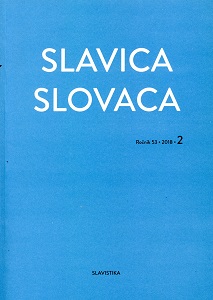
Cyrillic Manuscript Anthology of Sermons and Adhorations by Joseph Vasil Dubiak written in the second half of 18th century is a very valuable monument. It is important not only from the formal point of view, but foremost due to its linguistic features, as well as its content. This treatise offers its description, part of which describes the linguistic characteristics, especially its lexical part. Detailed textological research, when contextualized with other similar manuscript sermon anthologies, offers the help at uncovering the resources, which could inspire its edition in the Byzantine milieu in Slovakia.
More...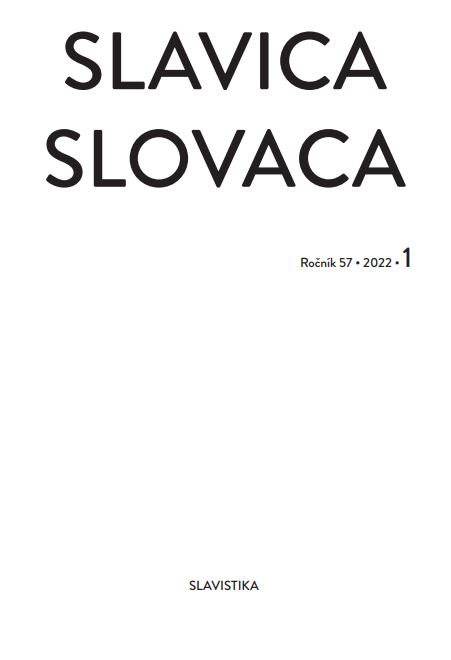
The paper offers detailed consideration of actional and verbal aspects of the triad of the ritualized actions «road», «crossing» and (reaching of) «lands beyond the river», which forms the basis of the East Slavic burial rite. Due to the linguistic specifics of the study the authors put their preferential attention to the language of the burial ritual, which is folklore texts (keening, spells, ritual precepts), their vestiges, separately existing as idiomatic phrases and separate words with peculiar semantics. Being the verbal counterpart of the ritualized action, textual information not only shows the interconnection between three stages of the burial ritual, but also encourages thinking about possible existence of mythological texts in the past, where the path of the dead is described – starting from gathering to the road, ritual precepts, and entering the Paradise extents.
More...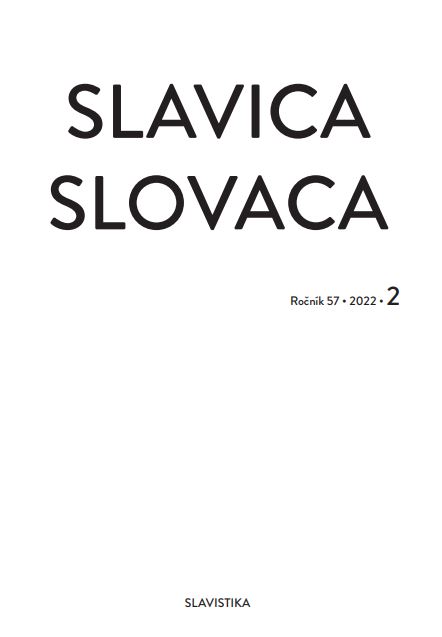
In the modern Ukrainian language, the word halepa (хáлéпа) belongs to the active vocabulary, however, its archaic background is felt quite clearly, and the etymology remains obscured. The most widespread is the version about the origin of the word halepa from the Greek language χᾰλεπός. The purpose of this article is to try to offer an alternative etymology based on the background of the Balkan Slavic linguistic and ethnocultural areas. The starting point is the obsolete meaning of the word halepa ‘bad weather’ in the projection onto its South Slavic demonological character (h)ala. The search for the etymology of the word halepa in Ukrainian language in terms of its hypothetical connection with the Bulgarian lexeme khala (хала) reflected the complexity of the Balkan situation with its characteristic mutual influences, interweaving and layers of languages and cultures. This is confirmed by several versions of the origin of the word (h) ala in this linguocultural area. When analyzing the lexicon of a mythological nature, it seems productive to turn to the texts of the spiritual culture of the Slavs, which contribute to the verification of etymological hypotheses. Almost identical features are found between the South Slavic and Ukrainian demonological characters, which are characterized by meteorological signs. The mythological, semantic and formal closeness of the Bulgarian word hala and the Ukrainian word halepa allows us to determine the following line of interconnection: hala – storm – whirlwind – hail – bad weather – misfortune – trouble – halepa. The analysis leads to the conclusion that in the Ukrainian language initially the word halepa meant bad weather, force of nature, then acquired the taboo meaning ‘devil’, which reflected the causal relationship of these concepts, and finally received the modern meaning ‘problem, trouble’.
More...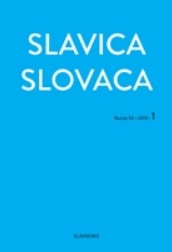
The author analyses the metaphorical verbo-nominal constructions strácať čas (waste time) and zabíjať čas (kill time) in Slovak and Slavic languages. By pointing out the existence of their equivalents in other European languages used in the close area (Hungarian, German, Romanian, Italian), they conclude that the constructions are not exclusively bound to the Slavic environment and call them arealisms. They also examine this structural-semantic model from the aspect of phraseological theory and lexicographical practice, finding out that the lexicographical characteristics of the phrases strácať čas (waste time) and zabíjať čas (kill time) in the dictionaries of the various Slavic languages are not identical. The essence of the phenomenon of time in general is also approached through the views of ancient philosophers and Christian scholars.
More...
Our study aims to analyze the concept of happiness in terms of their semantic content and verbal implementations. Linguistic analysis is tied to the lexicosemantic approach and fits into the modern directions of diachronic linguoculturology, and axiology. The transformations of happiness from the Archaic era through Christian culture to the present day are presented.
More...
The article features an interview with Prof. Peter Ďurčo, a distinguished Slovak linguist specializing in German, Russian, and Slovak languages. Born in 1954, Ďurčo's academic journey began with studies in Russian and German at the Pedagogical Faculty in Banská Bystrica. His career spans various institutions, including the Ľudovít Štúr Institute of Linguistics and the University of St. Cyril and Methodius in Trnava. Ďurčo's research focuses on lexicology, phraseology, and corpus linguistics, contributing significantly to multilingual lexicography and terminology. He has authored numerous monographs, scientific studies, and articles, and has been involved in several international projects. His work on phraseological constructions and collocations is particularly notable, reflecting his interest in the fixed expressions and their role in language learning and usage. Ďurčo's contributions have earned him recognition as a leading figure in Slovak and international linguistics.
More...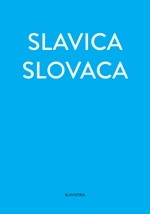
In “A Greek-English Lexicon of the Septuagint” when a word appears to be proper to the LXX and the literature depending on it, it is characterized as a neologism. The label “neol.” suggests that the word in question was probably not used before the time of the composition of the LXX. According to the Lexicon the first use of more than 500 words is in the Pentateuch. The purpose of the article is to trace how the Slavonic translator of the biblical books understands and transmits these words. It can be said that the translation of the neologisms is very indicative of the ways in which the vocabulary of the still young OCS was formed. It reveals the Slavonic men of letters not only as translators but as creators of the language.
More...
The article analyses 45 compound words from the Slavonic translation of the Miracles of St. Demetrius of Thessalonica by John Stavracius, originated in the 13th century. It has survived in only two known copies, both 15 th.-century autographs by the remarkable Balkan scribe Vladislav the Grammarian. The lexemes are considered in terms of word formation and semasiology, being distributed on a nest basis by recurrent components. The importance of the Greek original for the emergence of rare composite calques subordinated to the theme of miracles and their ideolog- ical messages is demonstrated. The collection is one of the most recent in its period of origin, reflecting the flexible adaptation of the cult of St. Demetrius to the new historical conditions of the Ottoman invasion.
More...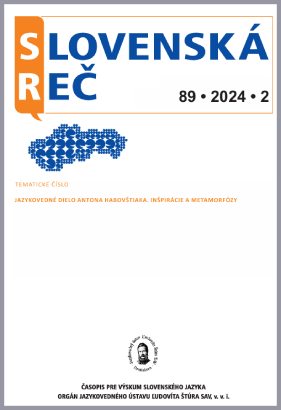
The paper summarizes the contribution of Anton Habovštiak’s scientific work in the field of Slavic comparative linguistics, especially dialectal lexicology and linguistic cartography. The central topic of the text reflects the participation of A. Habovštiak in international projects, with emphasis on the Slovanský jazykový atlas [Slavic Linguistic Atlas], research on the dialects of individual Slavic languages, and on the interconnection of the results of Slovak dialectology with other Slavic dialectological institutions. The paper also includes an overview of a number of Habovštiak’s scientific and professional publications that form the methodology of research on dialect vocabulary in both Slovak and Slavic scientific contexts. The paper concludes with the author’s memories of his cooperation with A. Habovštiak in the Slavic Linguistic Atlas project.
More...
This article explores the historical development of the meanings of two key words in 16th–19th century literary Estonian – raamat ‘book’ and kiri ‘letter, message, etc.’ Literary Estonian emerged in the first half of the 16th century, following the Reformation, with the translation of religious literature from German. Even at that time, the Estonian words raamat and kiri were used with distinct meanings. This article examines the evolution of their usage, drawing primarily on Corpus of Old Written Estonian and dictionaries. At the same time, it seeks to answer how and why, unlike in Finnish, the word raamat in Estonian came to refer to various types of texts, while kiri retained meanings that diverged from its Finnish counterpart, kirja ‘book’. In old written Estonian, both raamat and kiri referred to written documents. Over time, the word raamat became associated with longer printed or handwritten texts, while kiri referred to shorter texts intended for a specific recipient and purpose. Both words were used to denote the Bible and its parts. The usage of these words by Baltic German religious authors was influenced by the example of German words, such as Buch, Schrift, and Brief. However, there were also several semantic developments that occurred independently of German influence. With the diversification of Estonian written culture, new types of books, documents, letters, and other written texts have continued to be introduced over the centuries. Already by the late 19th century, compound words had been created to describe many of these. Later, as a result of deliberate language planning, further adjustments were made to both the meanings and forms of these words, leading to the creation of new terms for emerging types of books and written materials.
More...
This article explores the development of written Estonian during the early national awakening period, with a focus on the mid-19th century, as reflected in literary translations. The language reform process involved a transition from the old orthography to a new one, reducing dialectal differences, and enriching the vocabulary. Translated texts played a central role in this process. By broadening readers’ worldview with new concepts and ideas, and introducing language innovations in an appealing and engaging context, translations from the early national awakening period significantly contributed to the evolution of written Estonian. The article highlights examples from the works of translators who are now largely forgotten, such as Berend Gildenmann, Heinrich Nieländer, and Aleksander Umblia, alongside texts by key figures of the early Estonian national awakening, including Johann Voldemar Jannsen, Friedrich Reinhold Kreutzwald, and Friedrich Nikolai Russow. During the mid-19th century, the majority of Estonian-language literature comprised translations from German folk literature, adapted to suit the needs and knowledge levels of Estonian-speaking audiences. Translators often added explanations, introduced new words, expanded the existing vocabulary, and included notes that provided cultural and geographical context. Faithfulness to the original source text was not a priority; texts could be abridged, expanded, or annotated as needed. Thus, Estonian translations of popular books, such as Kreutzwald’s Reinowadder Rebbane (1850) and Kilplaste imewärklikud, wäga kentsakad, maa-ilmas kuulmata ja tännini veel üleskirjutamata jutud ja teud (1857), heavily adapted European literary heritage. These and other literary translations helped cultivate reading habits among the Estonian people, establish a book market, and lay the foundation for the emerging tradition of original Estonian literature as a cultural and communal phenomenon. The article also examines the historical context of the 19th-century standardization of written Estonian and its links to broader social and cultural changes, such as ideological disagreements between Baltic German and Estonian intellectuals and the bilingualism of educated Estonians. It discusses the attitudes of translators towards the language reform as well as the debates and perceptions surrounding translation as a cultural process.
More...
The article focuses on the personality of the prominent Slovak linguist and dialectologist Anton Habovštiak, in the context of the beginnings of work on one of the key projects of Slovak dialectology – Slovník slovenských nárečí [Dictionary of Slovak Dialects]. It points out the connection and inspirations in solving the theoretical and methodological issues of this work with the principles of a regional dialect research and their application in the subsequent processing of the rich dictionary material, also against the background of the materials of the Bratislava conference on the tasks and problems of Slovak dialectology (1960).
More...
The paper focuses on the specific part of the wide linguistic activity of Anton Habovštiak – his work in the field of text lexicography, connected with the edition called Hviezdoslavova knižnica [Hviezdoslav’s Library], which has not yet received due attention. In the beginning of the 2nd half of the 20th century A. Habovštiak prepared three literary glossaries serving readers of literary texts to solve their lexical problems with unfamiliar expressions (agnonyms). These "appended text dictionaries" that accompanied Slovak literary works of P. O. Hviezdoslav and Martin Kukučín were intended to help the Slovak but also the Czech readers understand unknown words in the frame of desired mutual reception of literary works and nurture of biliteracy in the Czech and Slovak cultural environments. Alongside the traditional dichotomy between "reading books in original" and "reading books in translation", in the Czech-Slovak context also the third way – reading books in the original language equipped with literary glossaries – appeared. The support of the Czech-Slovak and Slovak-Czech biliteracy alongside bilingualism represented a part of cultural policy and language planning that included the language management resulting in the specific peculiar form of lexicographical entries with both intralingual and interlingual explications of an unfamiliar word (by Slovak synonyms and Czech equivalents). A. Habovštiak, together with other linguists and cultural workers, became a textual lexicographer authoring appended dictionaries that represent a remarkable and still alive investment to the literary text lexicography accompanying classic Slovak literary works.
More...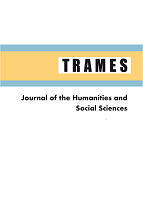
Swedish missionaries, through the ‘Swedish Mission Press’ established in Kashgar, East Turkestan, published numerous works from the early to mid-20th century in Eastern Turki to introduce Christianity to the Muslim Uyghur community. There are several particular features in the language and style employed in these works. This study aims to examine the terms used to express concepts related to God (the Father and the Son), the Bible, the Apostles, Jesus’ disciples, and ‘belief in God’ in eleven books published by Swedish missionaries in Kashgar to promote Christianity. The study concludes that Arabic and Persian terms related to Islam, which are easily understood by the Muslim Uyghur community, are frequently used in these works to introduce Christianity. This choice demonstrates that concepts already familiar to the Muslim Uyghur community are deliberately utilized in explaining and promoting Christianity.
More...